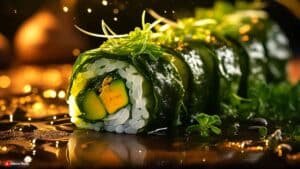Olive oil, a staple in kitchens worldwide, is more than just a cooking fat. It’s a flavor booster, a health hero, and a cultural symbol, all wrapped up in one golden bottle. But with so many varieties and labels, navigating the world of olive oil can be tricky. Fear not, fellow foodies! This glossary is your key to unlocking the secrets of this liquid gold.
Extra Virgin Olive Oil (EVOO): The king of olive oils, made by simply pressing fresh olives. It boasts the highest quality, fruity flavor, and health benefits. Drizzle it on salads, or bread, or dip it with crusty vegetables.
Virgin Olive Oil: Similar to EVOO but with slightly higher acidity and a lower price tag. Still great for finishing dishes and light cooking.
Refined Olive Oil: Obtained by refining virgin olive oil to remove impurities and acidity, making it neutral-tasting and suitable for high-heat cooking like frying.
Pomace Olive Oil: Extracted from leftover olive pulp after pressing. It’s the most affordable option but lacks the flavor and health benefits of virgin oils. Use it for deep-frying or industrial applications.
Smoke Point: The temperature at which oil starts to break down and smoke. EVOO has a lower smoke point (around 375°F), so save it for low-heat cooking. Refined and pomace olive oils have higher smoke points for frying.
Acidity: Measured in oleic acid, it indicates the quality and freshness of olive oil. EVOO has the lowest acidity (less than 0.8%).
Flavor Profile: EVOO comes in a variety of flavors depending on the olive variety, ripeness, and production methods. From grassy and peppery to buttery and nutty, there’s an EVOO for every palate.
Storage: Keep your olive oil in a cool, dark place away from heat and light. Use a dark-colored bottle if decanting from a clear one.
Remember: When it comes to olive oil, quality matters. Invest in a good bottle of EVOO for its flavor and health benefits, and use other types for specific cooking needs.
Bonus Tip: Look for certifications like “Protected Designation of Origin” (PDO) or “Protected Geographical Indication” (PGI) for guaranteed quality and authenticity.
Now that you’re armed with this olive oil knowledge, go forth and conquer the kitchen! Explore different varieties, experiment with flavors, and discover the magic of this versatile liquid treasure.







